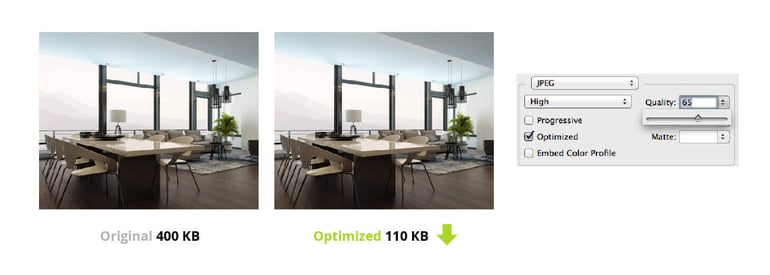By Restb.ai on 13 February 2018
Computer savvy users divide real estate websites into two categories: those that will remain relevant in 2018 and those that will not. The dividing line is whether online property listings have implemented computer vision technology.
Computer vision is a branch of Artificial Intelligence (A.I.) that recognizes objects and contexts in images, and tags and categorizes the features to deliver users fast and accurate search results. Restb.ai’s computer vision software, for instance, has conditioned its algorithms with millions of images to organize hundreds of real estate-specific settings and fixtures.
The companies that invest in computer vision will serve their online customers far more effectively than those that do not. The computer vision-savvy realtors will offer far more accurate and rich search results than those who choose stay with convention.
Computer vision can also help raise a website’s rankings on major search engines like Google and Bing.
However, just buying a computer vision solution does not make a portal competitive on search engines like Google. You’ll need to set up your computer vision software so it fills in what will otherwise appear as blanks to the search engine “spiders” that “crawl” the web indexing pages. Initializing your software this way makes it easier for Google, Microsoft Bing and other search engines to find your website and rank it highly on Search Engine Results Pages (SERPs). The aim is to use this and other Search Engine Optimization (SEO) techniques to get your property listings ahead of competitors who manage their offerings by other means.
Six SEO tips that will make A.I.-enhanced listings easier for prospects to find include:
- Fill in metadata;
- Provide detailed file names;
- Use high quality images;
- Optimize images for the Web;
- Relevant content that supports the images;
- Eliminate images with competitor logos and watermarks.
Fill in ALT and TITLE Tags
ALWAYS include ALT and title tags on images and links! Set up your computer vision software so it fills in what will otherwise appear as blanks to the search engine “spiders” that “crawl” the web indexing pages. Restb.ai’s solution has a rich lexicon of real estate-specific descriptions with which to illustrate images to search engines through the ALT descriptions.
See our article about the power of ALT tagging for more information about this amazing feature of Restb.ai’s software.
Use Descriptive File Names
Since search engines aren't capable of looking at images themselves, they rely on the descriptions and surrounding words to get an idea of the context surrounding the image. Image file names are a potent means to communicate to search engines and humans alike what a web page is displaying. The additional information a descriptive file name provides also boosts the relevance and authority of a website that is all about searching for property.
Use High Quality Images
Feeding your computer vision application high quality images increases the number of objects the A.I. algorithms are able to delineate in a picture. Well-resolved images also enable A.I. to determine the context in which objects and features reside. Though Restb.ai's algorithms excel at resolving fuzzy or ill-defined features in images, other products may not.
The algorithms that other companies offer may mislabel objects at worst, or just outright skip the image. Either way, agencies are leaving money on the table by not making property images easy to find and describe.

Optimize Images for the Web
Kissmetrics notes that 47% of users expect a webpage to load in under 2 seconds on mobile devices, and 40% will abandon a page that takes over 3 seconds to load. If a user has to abandon an image before it’s downloaded, then all the most descriptive tagging in the world will not help the customer.
It’s important to save image sizes for web display, instead of printing glossy photographs, which download more slowly. A rule of thumb is to not save an image larger than 1 Mb. JPEG-formatted images lend themselves well to scaling to lower densities.
 Relevant content that supports the images
Relevant content that supports the images
Supplement your property listings with a blog chocked full of valuable information. Content that visitors find useful will have them wanting to revisit the web site. Content can also provide search engine "spiders" with keywords and ALT tags that raise the rankings of the web site. Blogs also provide opportunities to place links between content on the website, and offer opportunities for other websites to provide backlinks to your portal. Backlinks show that other websites consider your site authoritative, which Google likes to promote.
Eliminate images with competitor logos and watermarks
Logos and watermarks placed overtop images may spoil the quality of your website, especially if the identifiers are from other companies. Logos and watermarks also obscure the features in images that may be important to categorize and that visitors may feel are important in their property searches. What is hidden cannot be tagged for search engines to find. If the search engines cannot find it, it is likely potential renters and buyers cannot, also.
Restb.ai recognizes the logos and watermarks placed on images and alerts administrators to their presence. Companies should remove the images or consider charging a management fee for the “real estate” the uninvited photos present.
Read more about Restb.ai’s watermark and logo detection feature here.
The Digital Divide in real estate is growing. Adoption of computer vision is presenting realtors with an information chasm they can either step over now to better serve their customers - or ignore to consign themselves to online irrelevance.





comments